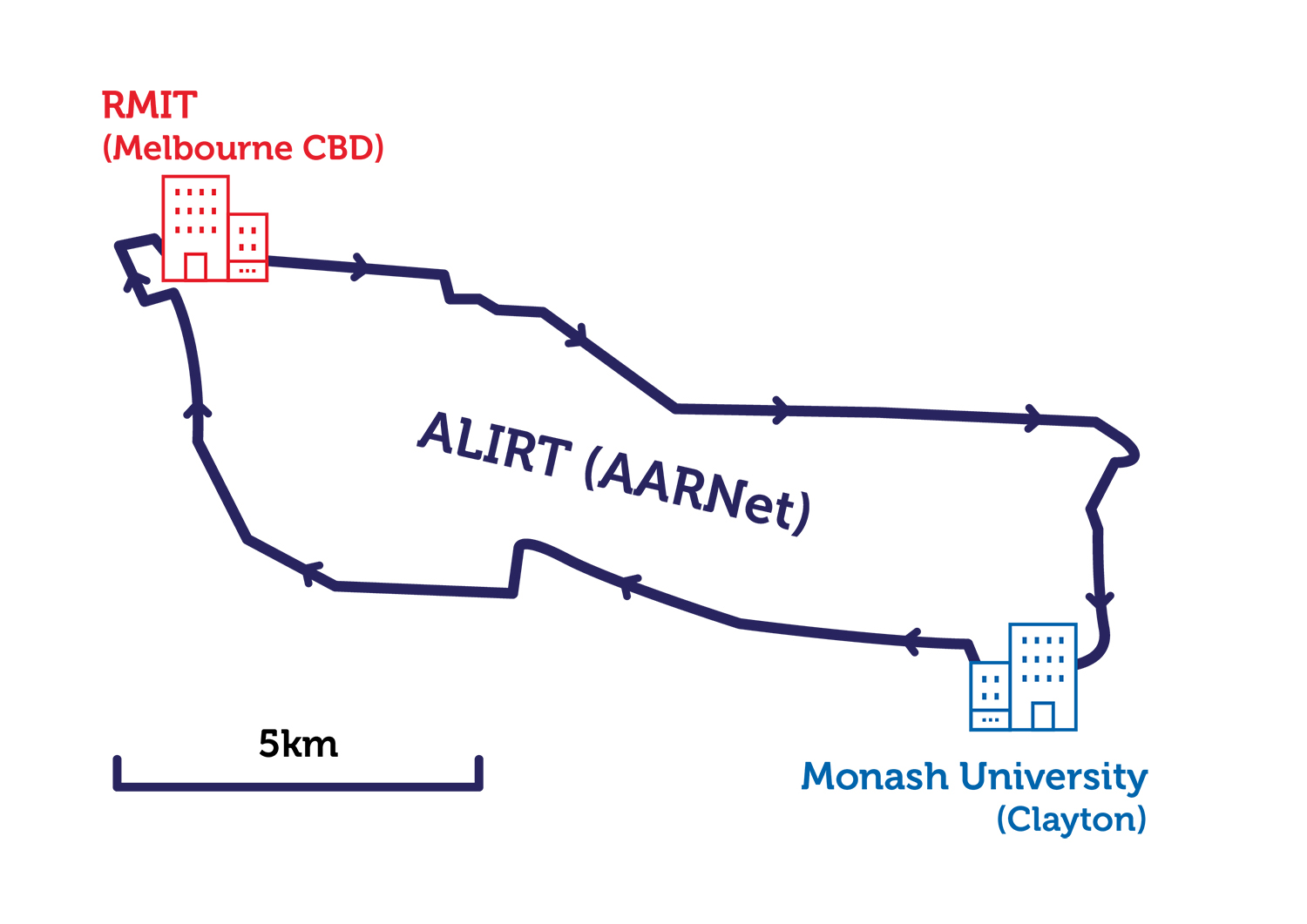
New internet-reliant technologies like self-driving cars, remote controlled mining and medical equipment, will require even faster and increased bandwidth in the future. To keep up with this demand, we need continued growth in data carrying capacity in the backbone fibre optic technology that carries all this data.
With our knowledge in photonic chip technologies and high-capacity optical communications, InPAC researchers at RMIT and Monash universities partnered with Swinburne for their expertise in microcomb technology with the aim to increase the data carrying capacity of our internet.
InPAC also offered an important and unique piece of the puzzle – the Australian Lightwave Infrastructure Research Testbed (ALIRT)* – the real-world fibre links, like those of Australia’s National Broadband Network. ALIRT is a laboratory that spans the whole Melbourne metropolitan area in a 76.6km loop of optical fibre just like the NBN, with a small portion set aside for collaborative research between institutes in Melbourne.

Together with Swinburne University, we achieved the world’s fastest internet data speeds – enough to download 1,000 high-definition movies in a second – from a single optical chip. These speeds are around three times the record data rate for the entire NBN and about 100 times the speed of any single device currently used in Australian fibre networks.
Our breakthrough chip was powered by a device known as an optical microcomb – a fingernail-sized optical chip that replaces 80 separate infrared lasers. The team plugged a system based on the microcomb chip into ALIRT’s existing optical fibres and sent the maximum amount of data down each channel to simulate peak internet usage.
This home-grown technology has the potential to fast-track the next 25 years of Australia’s – and the world’s – telecommunications capacity. Using ALIRT, we can quickly validate that our new data technologies are compatible with real-world systems, bringing us closer to translating our work out of academia and into industry.
*ALIRT is part of the InPAC laboratories linking RMIT and Monash University. The testbed was established under ARC Linkage Infrastructure and Equipment Funds LE170100160 as a collaboration between RMIT, Monash, Swinburne and AARNET. This project was supported by ARC Discovery Project 'Rainbows on Demand: coherent comb sources on a photonic chip' DP190102773.
The use of microcombs to achieve this record-breaking internet speed on a single optical chip is astounding – it is a very exciting step forward to keep up with our world’s need for even faster internet speeds.
Andrea Blanco-Redondo
Head of Silicon Photonics Department at Bell Labs, USA
Oct 2018: First team meeting with Monash, Swinburne and RMIT universities
Nov 2018: Began first communication test with a soliton crystal microcomb
Dec 2018: World’s first field trial of a microcomb communications systems in ALIRT
May 2019: Invented virtual sub-banding technique to increase capacity
July 2019: Final test of ALIRT, reached speeds of 39 Terabits per second
Aug 2019: Submitted journal article
May 2020: Nature Communications paper published
Ongoing: Spin off with industry and further academic collaborations
Read more about the partnership at www.rmit.edu.au/news/all-news/2020/may/fastest-internet-speed


RMIT University acknowledges the people of the Woi wurrung and Boon wurrung language groups of the eastern Kulin Nation on whose unceded lands we conduct the business of the University. RMIT University respectfully acknowledges their Ancestors and Elders, past and present. RMIT also acknowledges the Traditional Custodians and their Ancestors of the lands and waters across Australia where we conduct our business - Artwork 'Sentient' by Hollie Johnson, Gunaikurnai and Monero Ngarigo.
Learn more about our commitment to Indigenous cultures